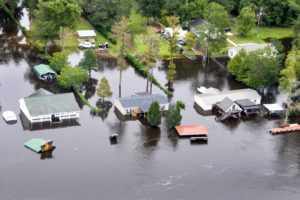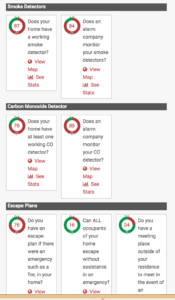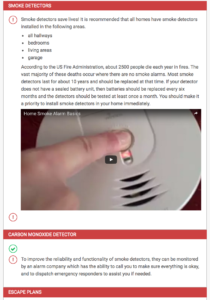Community Risk Reduction, The New Medic, Hazmat, and USAR ?
Community Risk Reduction is a topic at the forefront of most fire service organizations. While some have argued that it is the latest passing fad, I argue that what medics were in the 70’s & 80’s, hazmat was in the 80’s & 90″s, and USAR was in the 90’s & early 2000’s, Community Risk Reduction is the here and now. Medics, hazmat, and USAR changed the face of the the fire service. With each of these additions came new job descriptions, responsibilities, and the ever important additional funding. It is difficult to contemplate a fire service without these core elements. In a sort time, we won’t recognize the fire service without Community Risk Reduction.
Community Risk Reduction Metrics
In the Fire Service, we make decisions every day. Some of these decisions are easy, while others are very difficult. Some decisions will impact our communities for the long term. While others carry little to no long term significance at all. Good decision making skills are paramount when it comes to difficult and impactful situations. Community Risk Reduction is all about the difficult and impactful decisions.
Community Risk Reduction Metrics are the only way we can understand our community’s risks. There are various ways to utilize metrics to gain this information. Obviously, we need to examine our call loads to see what types of calls we are responding to. The fire service typically can easily pull this information, but what other information should we be looking at? History can be a great teacher here. What types of devastating emergencies have occurred in your community in the past? Wildfire, flooding, earthquake, tsunami, hurricane, tornado, ice storms, civil unrest, terrorism, and many others should be considered.
DHS Fusion Center Assistance
One of the overlooked resources to help understand your community’s risk are DHS Fusion Centers. These Fusion Centers are charged with Critical Infrastructure Protection (CIP) for their respective areas. As a former CIP Supervisor at one of these locations, I can tell you they use metrics in their models. Many have assessment teams to help you understand where your community risk lies. They also have access to various resources you can turn to at all levels of government. If you have never spoken with your Fusion Center, I encourage you to do so now. The resources they have and the knowledge base of those who work in these facilities can be quite extensive. Here is a listing of approved DHS Fusion Centers.
Residential Community Risk Reduction Metrics
Local fire departments can and should make a difference in Community Risk Reduction in their residential neighborhoods. Community Risk Reduction Metrics have been proven difficult to obtain though. How many fire chief’s can answer the question, “What percentage of homes in your community have working smoke alarms?” Unfortunately, this is a valid question and one that can be difficult to answer. Many homeowners do not want us physically in their homes and a simple survey often goes unanswered.
Virtual Community Risk Reduction can assist us in these areas. Virtual Community Risk Reduction couples a survey with a report outlining how a residence can improve its safety. This makes it much more likely a resident will take the survey. For example, after the smoke alarm question, the resident is given the information they need on why smoke alarms are important, where to get them, and how and where they should be installed. Virtual Community Risk Reduction allows us to obtain metrics and provide high quality information to our community.
Virtual Community Risk Reduction is like having a firefighter perform a risk assessment of each home in our community. Here is an example of a Virtual Community Risk Reduction program.
CCR, The Moving Target
One of the problems associated with Community Risk Reduction is it’s a moving target. Depending on the time of year, weather patterns, and many other circumstances, your risk will change. The goal is to get your risk to change based on your risk reduction programs as well. You may do such a good job with your smoke alarm program to allow you to move on to CO detectors, pool fences, opioid abuse, or any other risk you identify metrically as being a larger risk to your community. Metrics allow you to actually hit that moving target.
Decision Making Based on Metrics
Community Risk Reduction Metrics allow us to understand our community’s risk, prioritize our efforts, and justify the work we do. More importantly, it allows us to justify the work we need to be doing. If we can show government officials, safety boards, and our staff metrical evidence of why we need to do things, it is more likely we will have the support we will need to be successful.
Continued use of metrics also allows us to see if the programs we are implementing are making a difference. The ability to show where we were and where we are now after implementing a program is important. Consequently, metrics help us determine whether a program should continue or if changes should be made. “Gut” decisions will always be made. We are better equipped to make them, if we have the metrics to understand and measure our decisions.
 Brent Faulkner is a founding member of MBIntel and now serves as its CEO. He has 20 years of experience in the fire service. During this time, he has responded to numerous emergency situations including structure fires, wildland fires, hazardous materials responses, emergency medical situations, and numerous types of rescues. In addition, he has served on a Type 1 Hazardous Materials Response Team for 14 years.
Brent Faulkner is a founding member of MBIntel and now serves as its CEO. He has 20 years of experience in the fire service. During this time, he has responded to numerous emergency situations including structure fires, wildland fires, hazardous materials responses, emergency medical situations, and numerous types of rescues. In addition, he has served on a Type 1 Hazardous Materials Response Team for 14 years.
Brent had a defining moment in his career which, as a result, lead him to MBIntel. He lead a team in critical infrastructure protection at a recognized Department of Homeland Security (DHS) Terrorism Fusion Center. This team was responsible for increasing the safety of critical infrastructure as it relates to terrorism, general security, and natural disasters. He also specializes in emergency preparedness for homeowners and businesses. He has a master’s degree in management, a bachelor’s degree in occupational studies, an associate’s degree in hazardous materials response, and another in fire science.



